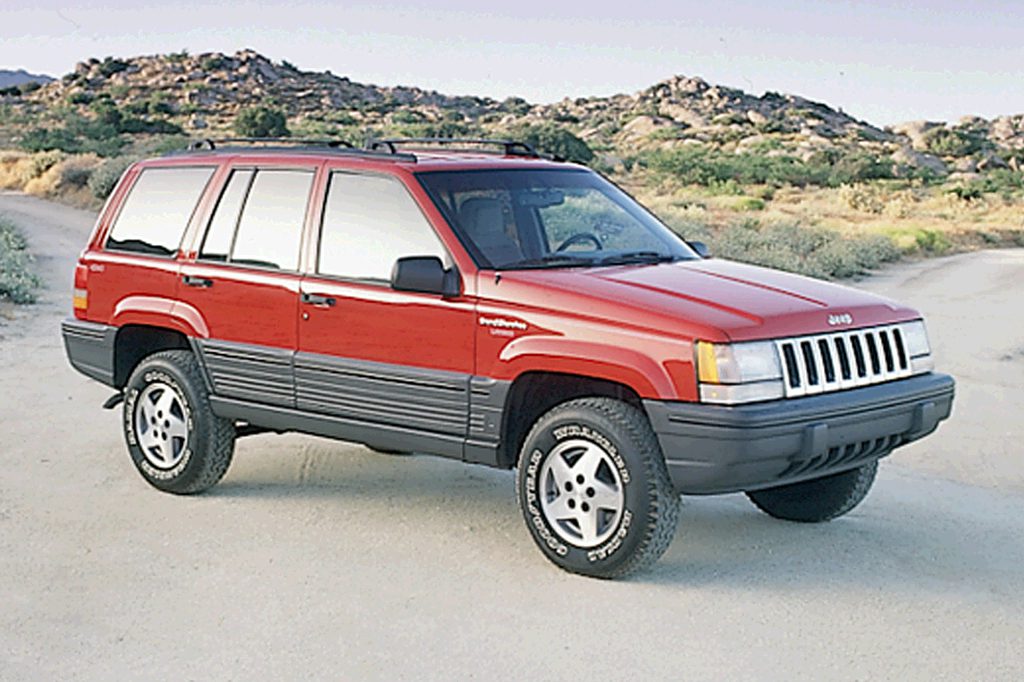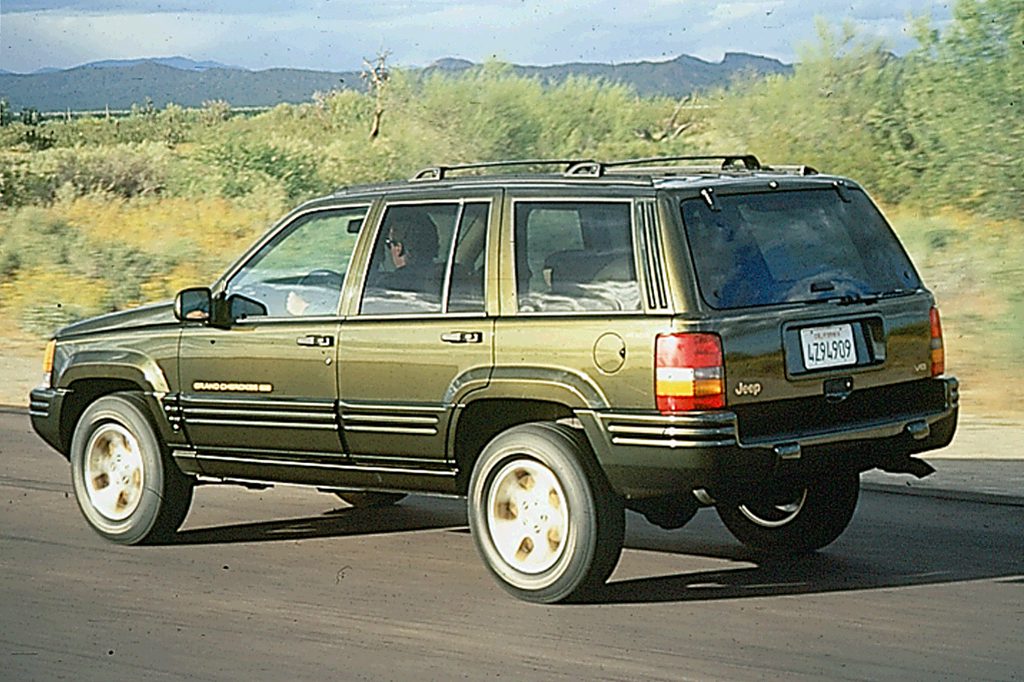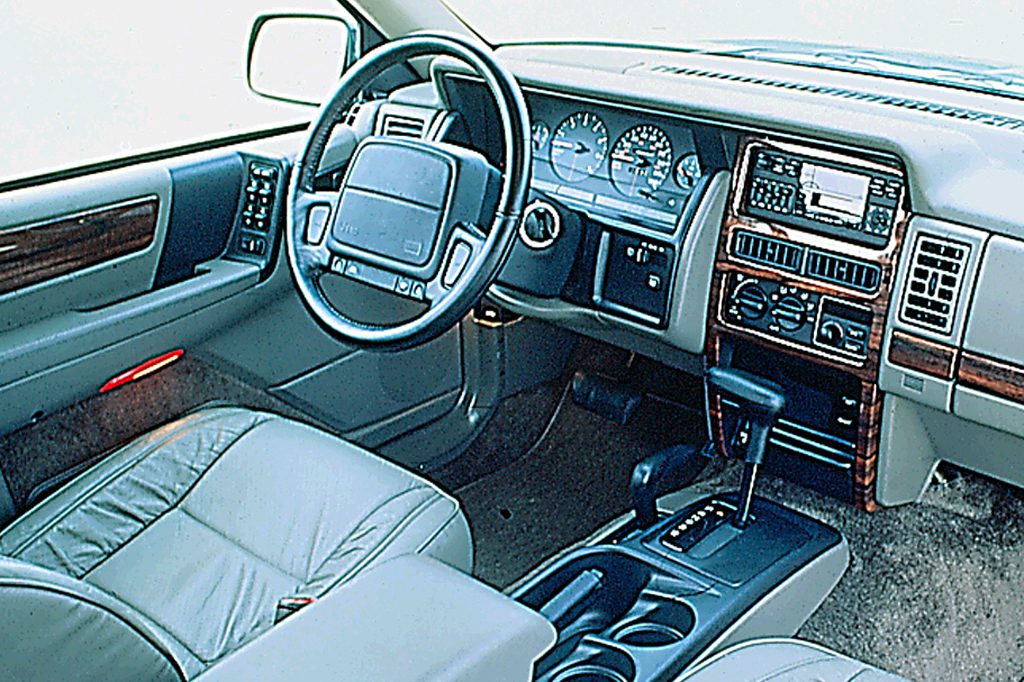| Midsize SUV; Built in USA |
|
|
| Good condition price range: $1,100 – $3,500* |

1993 Jeep Grand Cherokee Laredo

1993 Jeep Grand Cherokee Wagoneer

1996 Jeep Grand Cherokee

1993 Jeep Grand Cherokee interior

1993 Jeep Grand Cherokee interior
| Pros: |
|
| Cons: |
|
We rate the Grand a step behind the Ford Explorer, but both lead the field in refinement, ability, and overall quality. An Explorer is more trucklike, a trait that some buyers like and others do not, but the Grand Cherokee offers impressive on- and off-road performance, plus a broad range of engine and 4WD choices. Early Grand Cherokees suffered some reliability problems, so a later model might be a better bet.
Overview
The Grand Cherokee came only in a 4-door body with a one-piece rear liftgate. Standard features included a driver-side airbag, 4-wheel antilock brakes, and a 5-speed manual transmission. A 4-speed automatic transmission was optional. Standard engine for base, Laredo, and Limited models was a 190-horsepower, 4.0-liter 6-cylinder. Later in the 1993 model year, a 5.2-liter 220-horsepower V8 became standard in the new Grand Wagoneer (a one-year-only, top-of-the-line Grand Cherokee). Three distinct 4WD systems were available. Part-time Command-Trac; Selec-Trac, a full-time system that could be switched between 2WD and 4WD; and Quadra-Trac, a permanently engaged 4WD system. Two-wheel-drive models arrived late in the 1993 model run.
Yearly Updates
| 1994 Grand Cherokee Side door-guard beams were installed, and the base model was renamed SE. Grand Wagoneers were deleted, but the V8 engine was optional on all models–automatic transmission only. |
| 1995 Grand Cherokee In 1995, only SE and Limited models were available, plus a Laredo option for the SE. All Grand Cherokees now had all-disc brakes, and the V8 engine gained 15 pound-feet of torque. A flip-up liftgate window joined the option list, and the 5-speed manual transmission was dropped. |
| 1996 Grand Cherokee A passenger-side airbag was added for 1996, in a redesigned dashboard. Outside, a restyled grille dipped into the front bumper, and optional fog lamps were integrated into that bumper. A new steering wheel contained cruise-control switches and a center horn pad. Front and rear shoulder belts gained height adjustment. |
| 1997 Grand Cherokee Given the host of revisions made last year, changes to the 1997 Grand Cherokee were minimal. |
| 1998 Grand Cherokee Jeep added a monster 5.9-liter V8 to a new model named 5.9 Limited. ‘The big V8 came only with Quadra-Trac 4WD and an automatic transmission. Jeep’s flagship was redesigned for ’99. |
